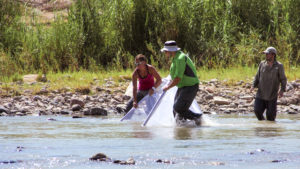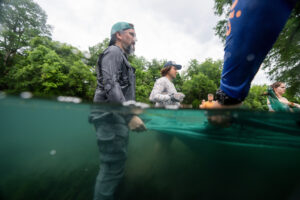
The Collection of Fishes serves as the official repository for specimens generated via research by faculty, students, and staff of the Department of Ecology and Conservation Biology at Texas A&M University. Our holdings may be searched by clicking here. Specimens in the Collection of Fishes are the result of expeditions and environmental surveys conducted by faculty, students, and biologists since 1937. The geographic coverage of specimens in the Collection of Fishes is impressive and includes 71 countries, and all 7 continents. Currently, the Collection of Fishes contains approximately over 993,086 distributed across 65,518 individual lots. Our collection now represents 4,111 species of fishes, from 1,613 genera and 373 families, representing 54 of the 57 recognized orders of fishes.
Shoal of Texas tetra (Astyanax argentatus) in spring-fed North fork of Guadalupe River, inside of The Kerr Wildlife Management area, Kerr County, Texas. Astyanax argentatus was previously considered a synonym of A. mexicanus but recognized as valid in a recent taxonomic study by Schmitter-Soto (2017). Video by Dr. Kevin Conway, Curator of Fishes, Biodiversity Research and Teaching Collections.
The majority of specimens are fluid preserved and stored in glass jars, but over-sized specimens up to 12 feet are stored in larger tanks. Cleared and double stained specimens, dry skeleton preparations, otoliths, field notes, x-rays and illustrations make up some of the additional ichthyological resources available through the collection. The Collection of Fishes also curates tissue samples (suitable for DNA extraction) obtained from voucher specimens housed within the collection. Voucher specimens and tissues are available to researchers at other institutions by request (our loan policy can be accessed here). The genetic material for our specimens is curated in parallel and stored in ultra-cold freezers and is also available to researchers by request. To search for specimens with associated tissues, visit the Global Genomic Biodiversity Network site. Specimen images and x-rays hosted by the TAMU Libraries can be accessed here.

As part of the NSF funded Digitization TCN: Collaborative Research: oVert: Open Exploration of Vertebrate Diversity in 3D (award #17014020) 218 specimens from the Collection of Fishes have been CT scanned. Included in the suite of specimens currently available are contrast enhanced scans. Datasets for these specimens are available via Morphosource.
Students from the University benefit from the collection in many ways. Courses in Ichthyology and Vertebrate Natural History utilize specimens for teaching. Students may also volunteer or complete their professional internship in the collection in order to receive experience and training in museum curation.

The Collection of Fishes has received financial support from the National Science Foundation, National Oceanic and Atmospheric Administration, Sea Grant Texas, Texas Parks and Wildlife Department, and others.
Recent Publications
Conway, K.W., G.I. Moore & A.P. Summers. 2024. A new genus and four new species of seagrass-specialist clingfishes (Teleostei, Gobiesocidae) from temperate southern Australia (Teleostei: Gobiesocidae). Zootaxa 5552:1-66.
Fields, A.T., Conway, K.W., Dolan, E. P., Swift, D.G., Monroe, A.A., Hollenbeck, C.M., Bean, P.T., Anderson, J.D. & Portnoy, D.S. 2024. Complete mitochondrial genomes of Notropis oxyrhynchus and Notropis buccula (Cypriniformes: Leuciscidae). Mitochondrial DNA Part B 9:1569-1574.
Fujiwara, K., H. Motomura, A.P. Summers & K.W. Conway. 2024. A new generic name for the “Lepadichthys” lineatus complex with a rediagnosis of Discotrema, a senior synonym of Unguitrema, and comments on their phylogenetic relationships (Gobiesocidae: Diademichthyinae). Vertebrate Zoology 74:279-301.
Kubicek, Kole M., Ralf Britz, and Kevin W. Conway. “Comment on ‘A standardized terminology of spines in the order Siluriformes (Actinopterygii: Ostariophysi)’by Ballen and de Pinna (2021).” Zoological Journal of the Linnean Society 202.1 (2024): zlad159.
Saenz, D.E., K.W. Conway & K.O. Winemiller. 2024. Distribution of cephalic electroreceptor organs in weakly electric South American knifefishes (Gymnotiformes). Ichthyological Exploration of Freshwaters 31:367-484.

